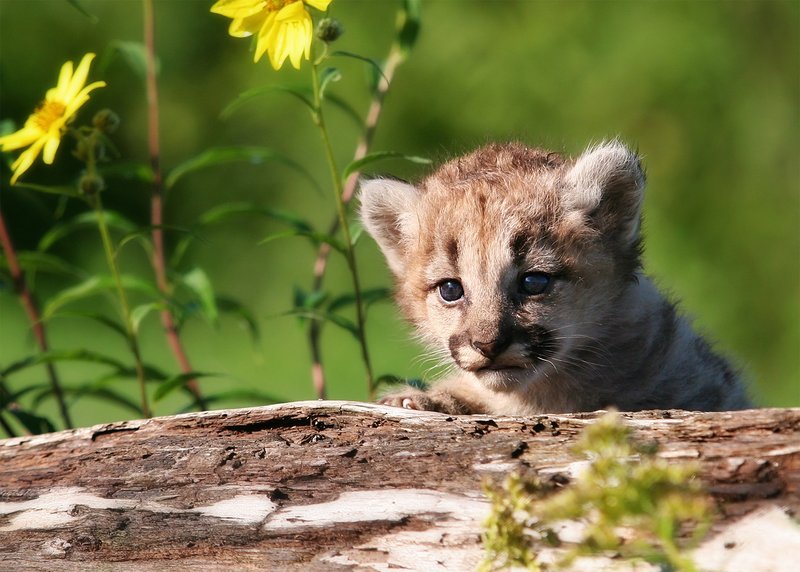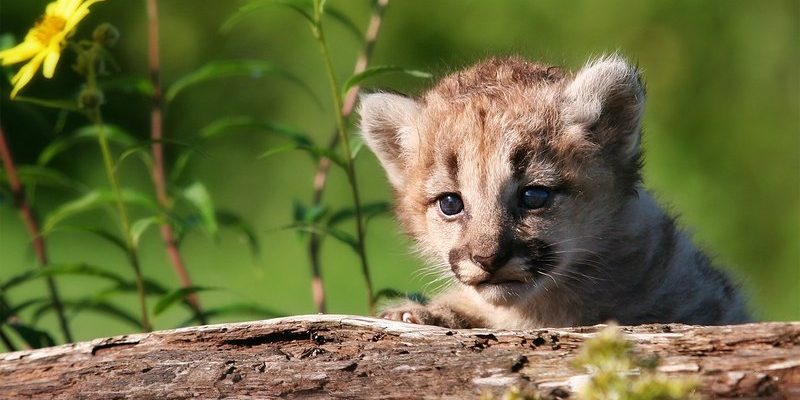
The process of raising their young is not just instinctual; it’s a delicate balance of protection, nutrition, and teaching critical survival skills. Let’s dive into how these fascinating creatures navigate the challenges of parenthood in their natural habitats.
Understanding Mountain Lion Reproduction
Mountain lion mating typically happens year-round, but most births occur between spring and early summer when food is plentiful. After a gestation period of about 90 to 95 days, a female mountain lion usually gives birth to a litter of two to four kittens. These tiny furballs weigh around one pound at birth and are completely dependent on their mother for survival.
Once born, the kittens are blind and rely on their mother’s warmth and care. This early stage is crucial for their development, and the mother must keep them safe from predators, which include larger cats or even other mountain lions. Here’s the thing: during the first few weeks, the mother will rarely leave her kittens alone, creating a secure den in dense vegetation or rocky outcrops where they can remain hidden.
Creating a Safe Den
Selecting a den is one of the most critical tasks for a mother mountain lion. Think of it as setting up a nursery; safety and comfort are top priorities. Dens are usually located in remote, secluded areas that provide cover and protection from potential threats.
Some common den sites include:
- Caves and rock ledges
- Dense brush and thickets
- Hollowed-out tree trunks
The mother will move her kittens to different dens over time to prevent detection by predators. This strategy mimics a game of hide-and-seek, where safety is the ultimate goal. By the end of their denning period, the kittens will be ready to venture outside and explore their new world.
The Role of a Mother Mountain Lion
Mother mountain lions are fiercely devoted to their young. They do everything—from feeding to teaching essential survival skills. You might be wondering how they manage it all. Well, it’s a mix of instincts and learned behavior.
Initially, the mother nurses her kittens, providing them with nutrient-rich milk that’s vital for their growth. As they grow, she starts introducing them to solid food—typically the remains of her kills. This not only helps the kittens learn how to eat but also teaches them about hunting. During the early weeks, they watch closely as their mother returns from hunts, absorbing everything they can.
Honestly, it’s inspiring to see how much effort goes into nurturing the cubs. They can start eating meat around six weeks old, and by three months, they’re learning to stalk and pounce playfully, mimicking their mother’s hunting behavior.
Socialization and Learning to Hunt
As kittens grow, socialization becomes essential. Mountain lions are solitary animals, but young lions learn valuable skills from observing their mother’s interactions with her environment. This period is marked by playful wrestling and chasing, which helps them develop their physical abilities and coordination.
During this phase, the mother often reflects on how to teach her kittens about their surroundings. She’ll lead them to water sources and show them which prey animals to hunt. Learning in this way is like attending a master class on survival—an experience that they will carry into adulthood.
Kittens generally remain with their mother for about 1.5 to 2 years, during which time they absorb crucial life lessons on what it takes to be a successful predator. And as they mature, they begin to form their own territories, separating themselves from their mother’s influence.
Challenges in Raising Young Mountain Lions
Raising young mountain lions is not without its challenges. The wilderness is a harsh teacher, and survival isn’t guaranteed. Predators, food scarcity, and human activity can all pose significant risks.
For instance, human encroachment into their habitats has led to increased vehicle strikes and poaching. A mother mountain lion must be ever-vigilant, moving her kittens if danger arises.
Another challenge is the competition with other predators. If a mother loses access to food, she might not be able to provide adequately for her kittens. It’s a tough balancing act, and unfortunately, not all litters make it to adulthood.
The Independence of Young Mountain Lions
Finally, after spending almost two years with their mother, the young mountain lions are ready to strike out on their own. This transition is essential for their survival—it’s a rite of passage into adulthood.
During this time, they’ll explore their surroundings, establish their territories, and begin the cycle all over again. However, leaving the nest doesn’t mean they forget everything they learned. Those early lessons about hunting and surviving echo through their lives, influencing how they deal with challenges.
It’s a fascinating, albeit bittersweet, part of the mountain lion’s life cycle. Once they build their confidence and skill level, they’re ready to take on the world—just like their mother once did.
The journey of a mountain lion raising her young is a beautiful, complex process that reflects the wonders of nature. From selecting the perfect den to teaching them how to hunt, these fierce yet nurturing creatures display a remarkable commitment to their offspring.
Observing how mountain lions interact with their young can teach us a lot about resilience and the importance of nurturing in the wild. It’s not just about survival; it’s about ensuring the future of the species.
So the next time you think about mountain lions, remember their journey as parents—those wild kittens playing, learning, and ultimately stepping into the vast landscapes that lie ahead. It’s a story of strength, care, and the instinctual dance of life in the wild.

